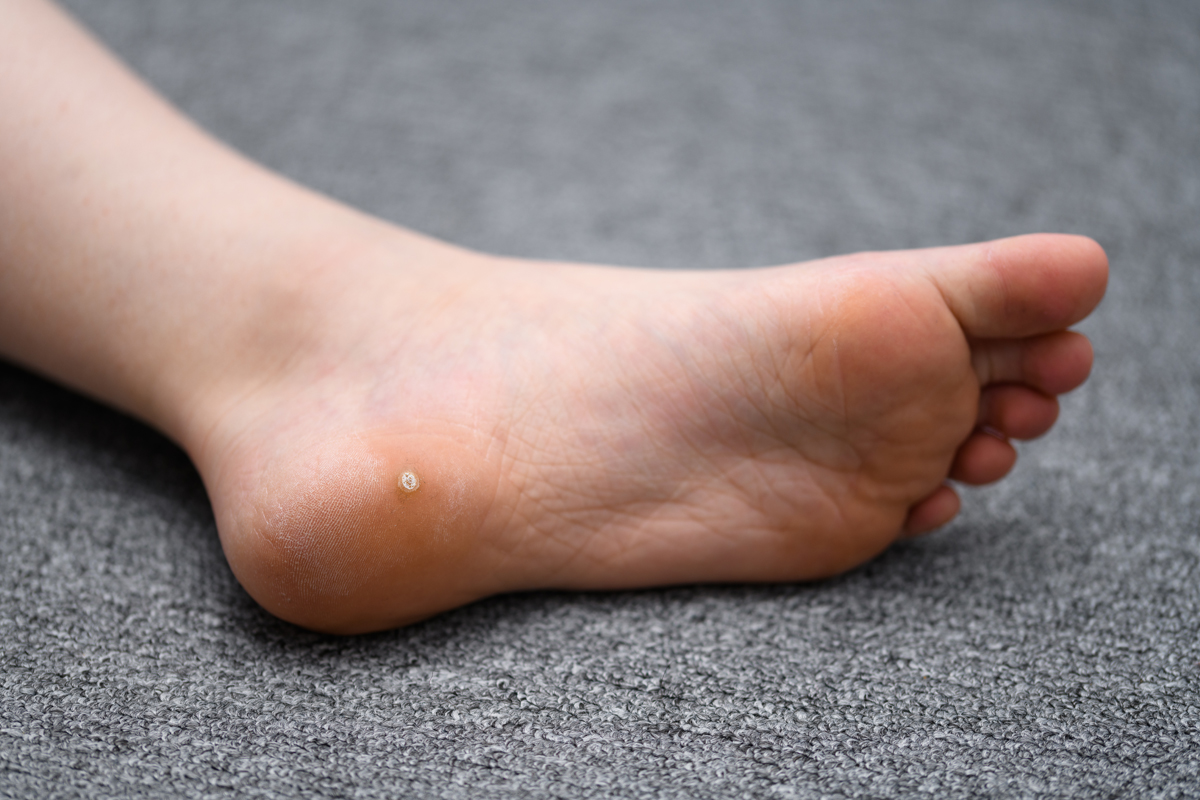What a time for a verruca to pop up or become painful! That’s right, sore feet don’t stop just because we have a lot to deal with.
If at this time you won’t be unable to visit us in our clinic as you usually would, that doesn’t mean we can’t help you get back on your feet.
You may be wondering what a verruca is and why you’ve got it… what is that ‘thing’ on my foot?’
Verruca Pedis (Plantar warts) are a very common skin condition amongst both children and adults and they are caused by the Human Papilloma Virus (HPV). To contract the virus there needs to be a break in the skin where the virus can enter the body. Once the virus enters, a benign mass is formed which then protrudes above the skin.

What can I expect to see?
- A hard, rough growth
- Yellowish colour with or without small dots within.
- The dots can be black or red, these are small, superficial capillaries.
- The wart may be painful when squeezed
- One or more lesions on the soles of your feet
- Can be symptomatic or non-symptomatic
Why are they there?
- Verruca are spread via skin to skin contact or by contact with the skin shed from another verruca containing the virus. This means they are often picked up by walking in bare feet in public areas such as swimming pools, public showers or changing room floors in places like the gym or pools where the floors are often warm and wet.
- Having a poor immune system can make it harder for the body to fight off the virus.
What can I do at home?
Step 1. Clean and dry your feet
Step 2. Wash your hands
Step 3. Use a disposable nail file/foot file to reduce the hard skin on top of the verruca. It may bleed so be careful not to touch it.
Step 4. Use an over the counter treatment, such as Duofilm* if you have it, or occlude (suffocate) the verruca by cutting a piece of duct tape slightly larger than the verruca and covering it. Make sure all the edges are pressed down firmly. Change the duct tape every 48 h, or if the duct tape starts to become loose.
* Be cautious about over the counter treatments as they can sometimes damage skin, especially if you have diabetes or poor circulation.
Step 5. Whatever method you chose, make sure you keep the verruca covered and dispose of all used dressings/plasters and duct tape responsibly to reduce the spread of infection to other household members.
To prevent verruca always wear shoes in public areas, avoid contact with other verrucas and warts from both yourself and others and don’t forget to wash and dry your feet daily.
Our clinic has now reopened and we can offer our services again, which may include debriding the verruca and applying a stronger topical agent that will help kill the virus or we may surgically remove the verruca.
If you’re still unsure if the ‘thing’ on your foot is a verruca, it’s time for a video call and one of our friendly podiatrists can confirm the diagnosis and discuss the appropriate treatment plan with you. You can visit us at https://respod.co.nz/video-appointment/ or phone us on 0800 473 7763.
Stay safe out there

